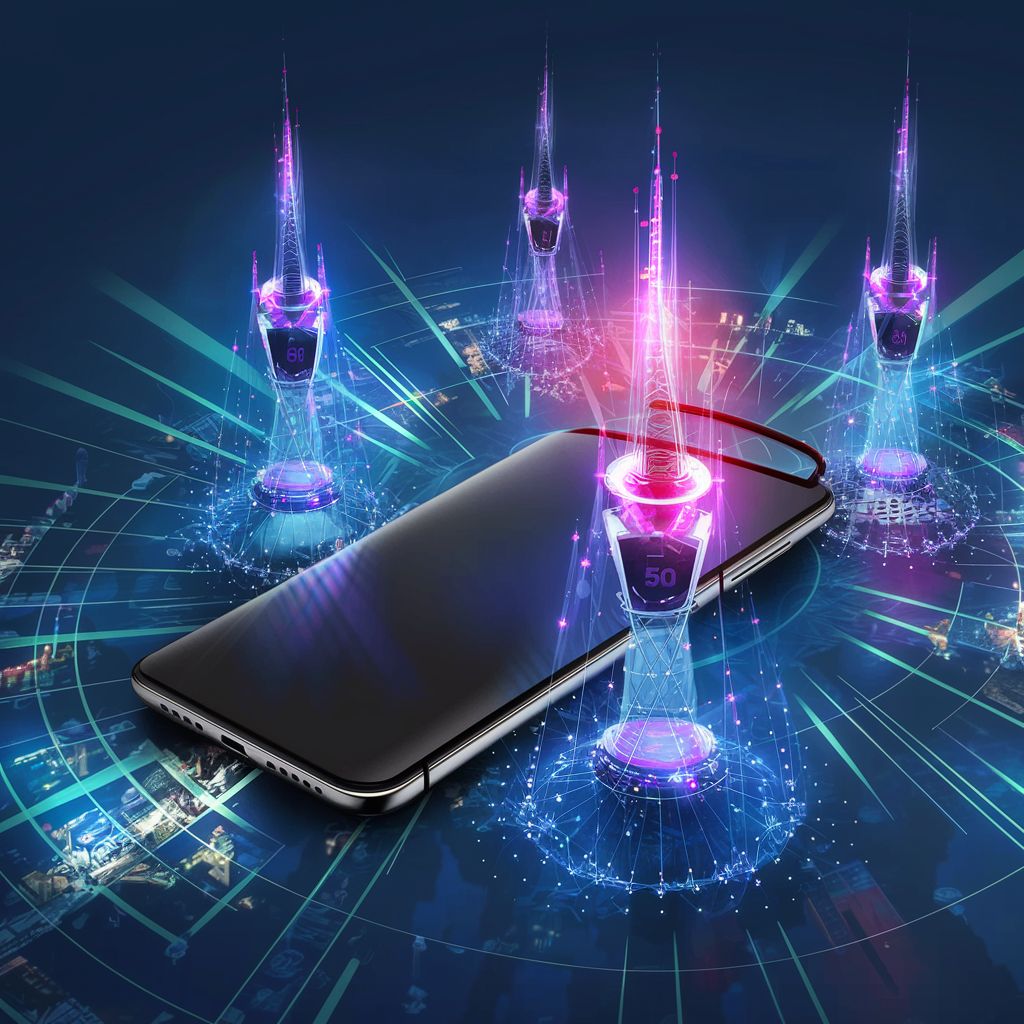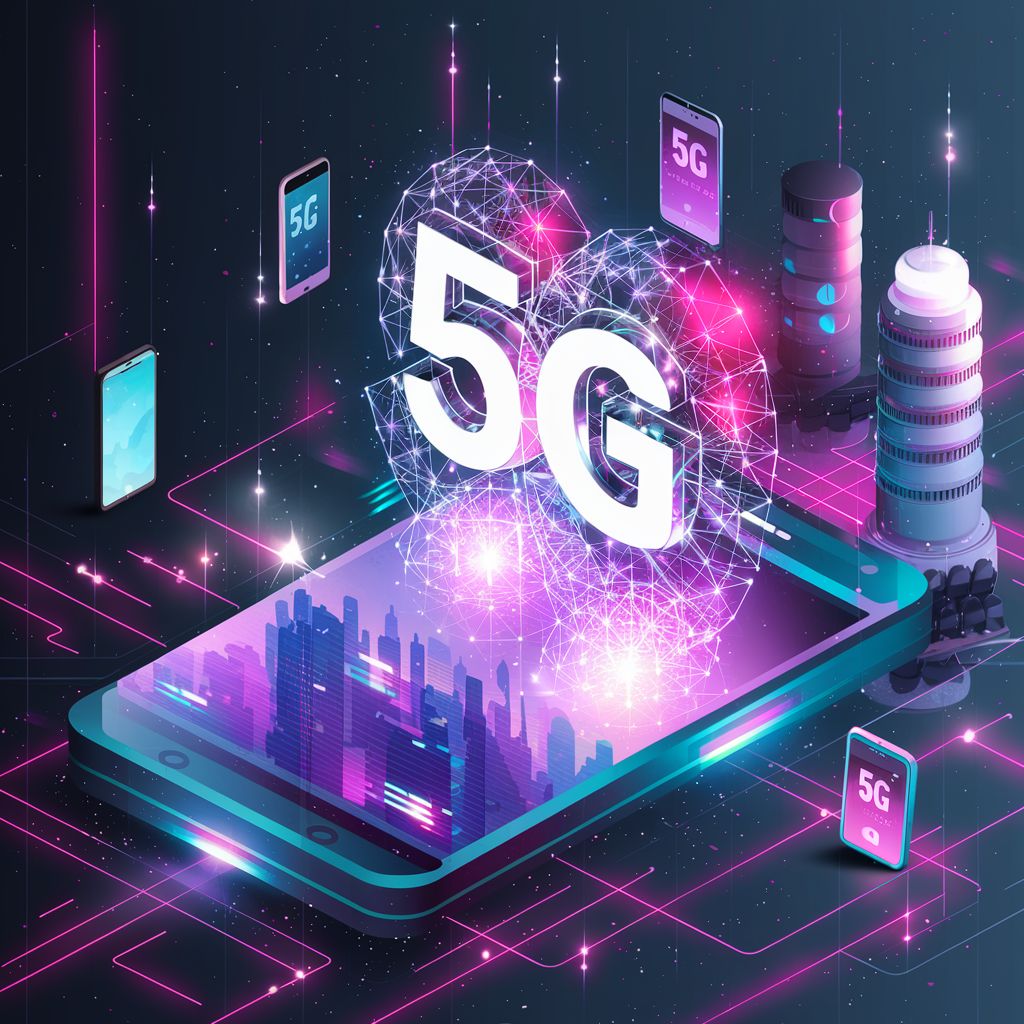How 5G Technology is Revolutionizing the Mobile Phone Landscape
The world of mobile technology is experiencing a seismic shift with the advent of 5G technology. Promising unprecedented speeds, improved connectivity, and the ability to power new, transformative applications, 5G is more than just an upgrade from 4G—it represents a fundamental change in how we use our mobile devices and how industries will adapt to new technological realities.
In this blog post, we’ll explore how 5G technology is revolutionizing the mobile phone landscape. From enhanced mobile experiences to the implications for industries such as healthcare and transportation, 5G is poised to make an indelible impact on nearly every aspect of our connected lives.
What is 5G Technology?
5G technology is the fifth generation of mobile network technology. It succeeds 4G LTE (Long-Term Evolution) and offers significant advancements in terms of speed, latency, and capacity. While previous generations of mobile networks improved upon one another incrementally, 5G represents a leap forward that will change not only the way mobile phones function but also how industries operate.
Key Features of 5G Technology
- Faster Speeds: 5G is expected to provide peak data rates up to 20 Gbps, far surpassing the speeds of 4G LTE, which caps at around 1 Gbps in optimal conditions.
- Low Latency: One of the critical benefits of 5G is reduced latency, allowing for nearly instantaneous data transmission. Latency in 5G networks can drop as low as 1 millisecond, compared to 50 milliseconds with 4G.
- Increased Network Capacity: 5G networks can support a far greater number of connected devices per square kilometer than 4G, making it ideal for densely populated urban areas and the emerging Internet of Things (IoT) ecosystem.
- Enhanced Reliability: The structure of 5G networks includes improved redundancy and coverage capabilities, leading to more consistent connections and fewer dropped signals.
These features make 5G a transformative force in mobile technology, unlocking potential far beyond faster video streaming and web browsing.
How 5G Technology is Transforming the Mobile Phone Landscape

The rollout of 5G technology is impacting various aspects of the mobile phone landscape, from device capabilities and user experiences to the evolution of mobile network infrastructure. Below are the key areas where 5G is making the most significant changes.
1. Faster and More Reliable Mobile Internet
The most immediate and noticeable impact of 5G technology on the mobile phone landscape is the significant increase in internet speed and reliability. With 5G, mobile users can download and upload data faster than ever before, which has profound implications for everyday tasks such as streaming video, gaming, and using cloud services.
For example, with 4G LTE, downloading a high-definition (HD) movie might take several minutes. With 5G, the same task can be completed in seconds. Similarly, mobile gamers will benefit from smoother gameplay experiences, especially in multiplayer environments where latency can make or break a session.
Enhanced Streaming and Media Consumption
With 5G, buffering and loading times for video content will be a thing of the past. Streaming in 4K or even 8K resolution will become seamless, providing users with an ultra-high-definition viewing experience. Additionally, virtual reality (VR) and augmented reality (AR) applications, which demand vast amounts of data and low latency, will thrive on 5G networks.
Real-Time Cloud Services
As cloud services continue to grow in importance, 5G will play a crucial role in making them more accessible and efficient. From cloud-based storage solutions to software-as-a-service (SaaS) applications, users will be able to access files and services remotely with near-instant responsiveness, removing the need for significant amounts of local storage on mobile devices.
2. Evolution of Mobile Devices
The introduction of 5G technology is also driving an evolution in mobile phone hardware. New 5G-compatible phones are being designed not only to leverage the higher speeds and lower latency of 5G but also to support an array of new applications and capabilities that were previously unimaginable.
Enhanced Hardware to Support 5G
Modern smartphones require advanced chipsets capable of handling 5G networks. Manufacturers like Qualcomm, MediaTek, and Apple are producing 5G-capable processors, such as the Snapdragon 8 Gen 2, to ensure that new phones can meet the demands of this new network standard. These chipsets support faster data processing, improved energy efficiency, and more advanced AI capabilities.
Battery Life and Heat Management
Running on 5G can consume more power due to the constant connection to high-speed networks and increased data transfer. As a result, smartphone manufacturers are focusing on improving battery technology and heat management systems. Many 5G-enabled devices come equipped with larger batteries and more sophisticated cooling systems to handle the higher energy requirements without compromising on user experience.
Foldable and Modular Devices
With 5G, the demand for more innovative and flexible mobile phone designs is increasing. Foldable phones and modular devices that can be upgraded with new components are gaining traction. The increased bandwidth of 5G networks allows for better multi-screen usage and more powerful, flexible devices, aligning with the changing needs of consumers who want their devices to do more than ever before.
3. The Role of 5G in IoT and Smart Cities
The impact of 5G technology goes beyond individual mobile devices—it extends to entire ecosystems like the Internet of Things (IoT) and smart cities. The higher network capacity of 5G enables billions of devices to connect seamlessly, from smart home appliances to autonomous vehicles, industrial machines, and healthcare devices.

IoT Expansion
The rise of 5G is fueling the expansion of IoT, which consists of a vast network of connected devices that communicate with each other. This includes everything from smartwatches and fitness trackers to industrial sensors, connected cars, and smart home systems. The ultra-low latency and high bandwidth of 5G make real-time communication between these devices possible, creating new opportunities for automation and efficiency.
For instance, in healthcare, wearable devices can monitor a patient’s vital signs in real-time and transmit data to doctors, allowing for continuous, remote health monitoring. Similarly, in smart cities, sensors embedded in public infrastructure can communicate with traffic systems and emergency services, making cities safer and more efficient.
Autonomous Vehicles and Smart Infrastructure
One of the most exciting applications of 5G technology is in autonomous vehicles. Self-driving cars rely on vast amounts of real-time data to navigate safely and efficiently. With 5G, vehicles can communicate with each other and with smart infrastructure, such as traffic lights and road sensors, reducing the risk of accidents and improving traffic flow.
5G will also support the development of smart cities, where everything from streetlights to waste management systems is interconnected. These cities will rely on 5G to collect, analyze, and act on data in real-time, making urban environments more sustainable and efficient.
4. Impact on Industries: From Healthcare to Entertainment
5G technology is not just a consumer-focused innovation. Its high speed and low latency are poised to transform a wide range of industries, revolutionizing everything from healthcare to entertainment.
Healthcare
Telemedicine and remote surgery are two areas where 5G is expected to make a significant impact. With 5G’s low latency, doctors can perform remote surgeries with precise control, and real-time video consultations will become smoother and more effective, even in areas with previously unreliable connectivity.
5G also allows for better management of big data in healthcare. Medical professionals can access and share large amounts of data, such as medical imaging, almost instantaneously, leading to quicker diagnoses and treatment plans.
Entertainment and Media
5G’s impact on the entertainment industry will be profound. As mentioned earlier, 5G will enable new media formats such as VR and AR to become mainstream. This will change how consumers interact with content, from immersive video games to augmented reality experiences that enhance live events or concerts.
5G also opens up new possibilities for content creators, as they will be able to distribute and monetize high-quality, immersive content without the limitations of slow or unreliable networks.
Business and Manufacturing
For industries like manufacturing, 5G technology can enable real-time monitoring and automation of production lines. Factories can implement IoT devices and sensors that provide detailed analytics and predictive maintenance, reducing downtime and improving efficiency.
Similarly, businesses can leverage 5G to enhance mobile workforce capabilities, with remote workers gaining access to cloud-based tools and resources with the same speed and reliability as they would in an office environment.
5. Challenges and Opportunities for Mobile Network Providers
While 5G technology offers numerous benefits, it also presents several challenges for mobile network providers. Rolling out 5G networks requires significant investment in infrastructure, including new cell towers and upgraded base stations. Additionally, the deployment of 5G in rural or remote areas poses logistical challenges, as these areas may not generate enough demand to justify the cost of infrastructure upgrades.
Despite these challenges, the opportunities presented by 5G are vast. Mobile network providers can offer new services and premium plans, such as enhanced streaming options, lower latency for mobile gaming, and priority access to 5G networks. Moreover, they can tap into the growing IoT market, providing connectivity for smart devices in homes, businesses, and cities.
The Future of Mobile Phones in a 5G World

As 5G technology continues to roll out worldwide, the future of mobile phones looks increasingly promising. The combination of faster speeds, lower latency, and greater network capacity will enable new mobile experiences that were previously out of reach. From real-time virtual collaborations to enhanced AI applications, the possibilities are limitless.
Looking forward, the introduction of 6G technology may bring even more advancements, but for now, 5G is set to dominate the mobile landscape for the next decade, transforming the way we live, work, and communicate.
FAQs About 5G Technology
1. What is the difference between 4G and 5G technology?
5G technology offers faster speeds, lower latency, and greater network capacity compared to 4G. While 4G focuses on improving mobile internet for tasks like browsing and streaming, 5G is designed to support a wider range of applications, including IoT devices and real-time services such as remote surgery and autonomous vehicles.
2. Will 5G replace 4G entirely?
No, 5G will not replace 4G entirely. Both networks will coexist for the foreseeable future. While 5G will become the primary network for new devices and services, 4G will continue to be used in areas where 5G infrastructure is not yet available, especially in rural regions.
3. Is 5G technology safe?
Yes, 5G technology is safe. It operates within the same general frequency range as previous generations of mobile networks and adheres to international safety guidelines. Extensive research has been conducted to ensure that 5G poses no significant health risks to users.
4. Do I need a new phone to use 5G?
Yes, to access 5G networks, you will need a 5G-compatible phone. Most new smartphones released after 2020 come with 5G capabilities, but older devices that only support 4G LTE will not be able to connect to 5G networks.
5. When will 5G be available everywhere?
5G rollout is happening in phases, and availability depends on where you live. Major cities in many countries already have 5G coverage, while rural areas may take several more years to gain widespread access. Mobile network providers are continually expanding their 5G infrastructure to reach more areas.







